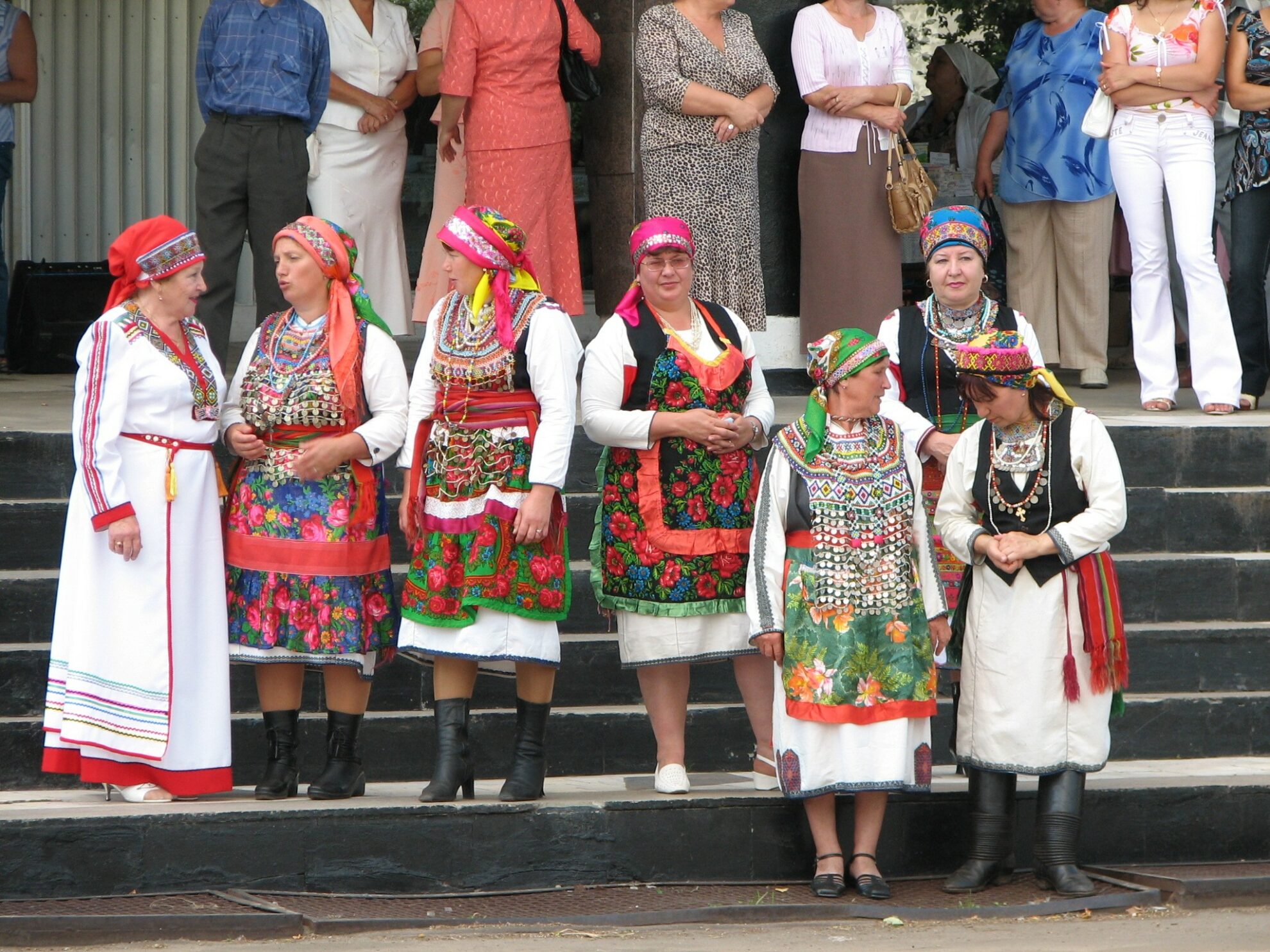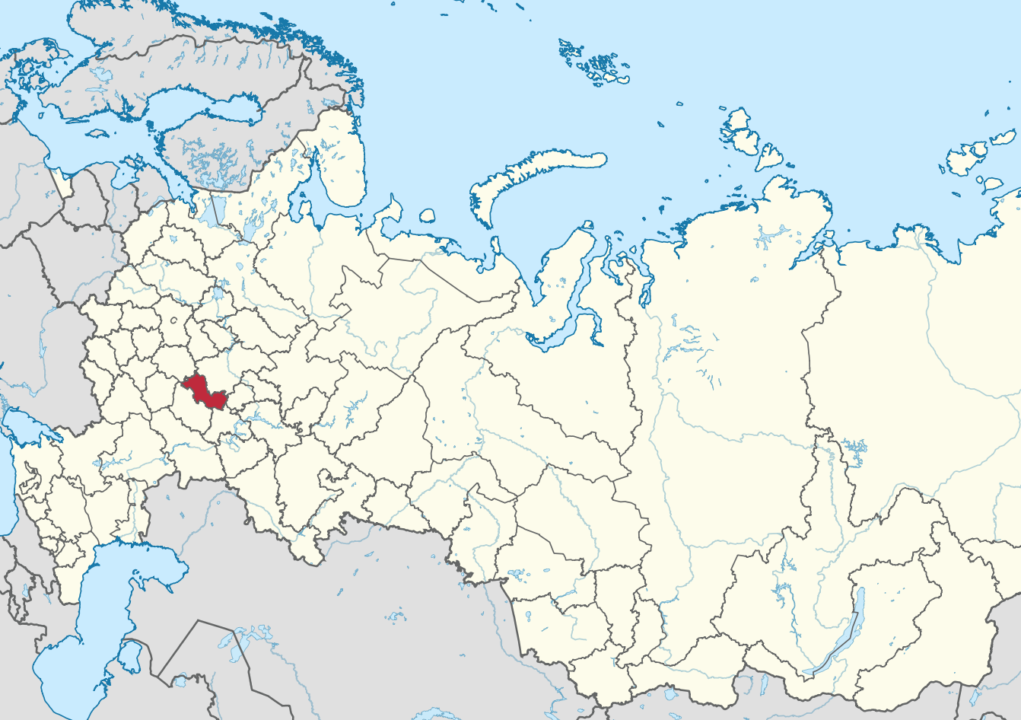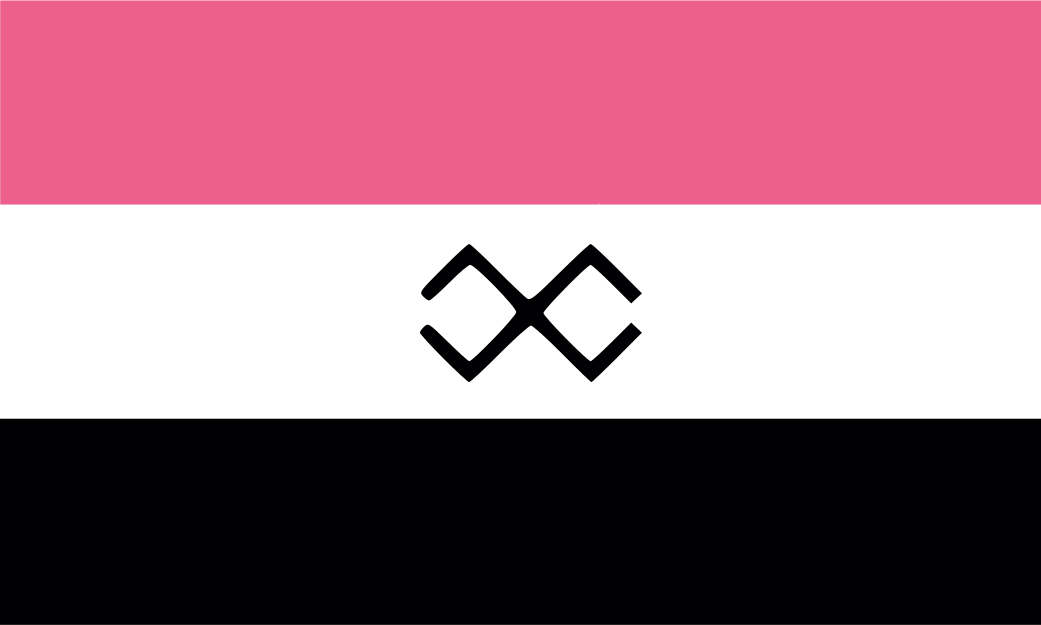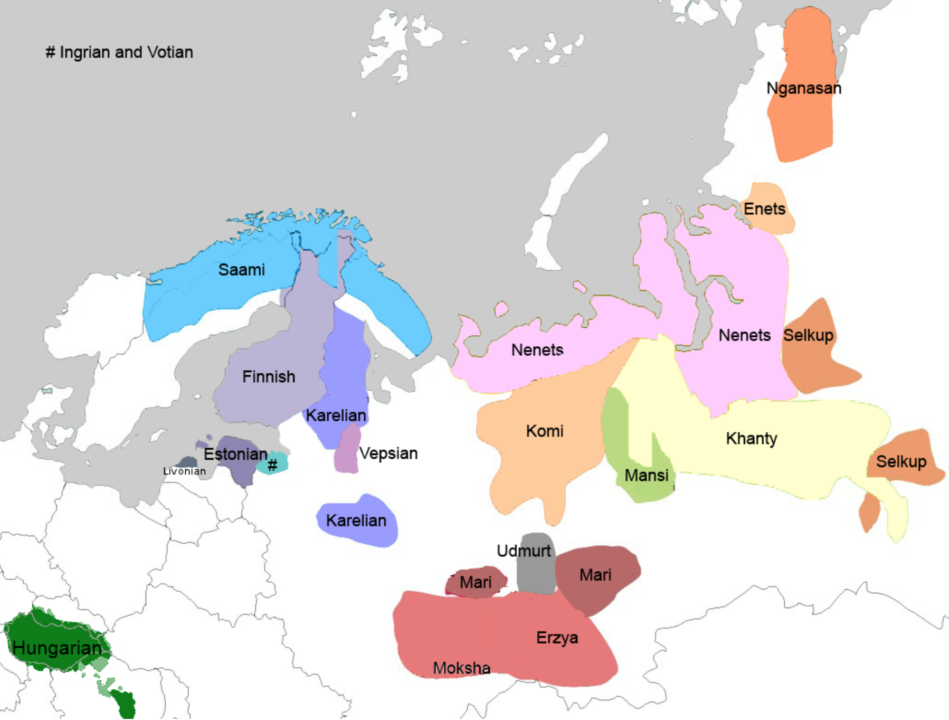
Moksha
Names
The name ‘Moksha’ comes from the Moksha autonym. The Moksha have traditionally called themselves mokša, mokšk. The autonym has been associated with the Russian name of the tributary of the Oka River passing the Moksha territory, the Moksha River. The river name is believed to be of Baltic origin. In Moksha, the word has come to mean ‘stream, current, river’ and is the second element of some local river names further north of the traditional Moksha territory (Shirmoksha, Mamoksha).
The first mention of the Moksha is from the 12th century by the Flemish missionary and explorer William of Rubruck, who used the form Moksel.



Territory
Administratively the Moksha live in the southern and western parts of the Republic of Mordovia and in Pensa and Saratov Oblasts. The capital of the Republic of Mordovia is Saransk.
Population
The Moksha have been grouped with the Erzya and Shoksha under the term ‘Mordvin’ since 1928, making the definition of the Moksha difficult. According to the 2020 census, there were 484,450 Mordvins, of whom 11,801 self-identified as Moksha. This is a decrease of 34,9% for Mordvins, but an increase of 147,6% for Moksha from the the 2010 census, according to which there were 744,236 Mordvins, of whom 4,767 specified their ethnicity as Moksha. Such a phenomenon is evident of a growing Moksha identity. Such a development is evident also in the increase of reported mother tongue: in 2010, 1,529 reported Moksha as their mother tongue, but in 2020, the amount was 19,911 people.
When speaking about the Mordvins in general, they have been among the largest Finno-Ugric peoples. In 1989, the Mordvian population in the same territory was much larger, 1,072,939 people. In 2002, there were 843,359 Mordvins, of whom 73% spoke a Mordvin language as their mother tongue. In the 2002 census, 49,624 self-identified as Moksha. The Moksha are assimilating faster than other Finno-Ugric peoples due to their geographic dispersion. In the Republic of Mordovia they make up only a third of the population. The greatest number of Mordvinic people are living in Samara, Pensa, Orenburg, Ulyanovsk and Nizhny Novgorod Oblasts. Outside Russia, there are many communities in Kazakhstan (30,000), Ukraine (19,000) and Uzbekistan (12,000).
Language
The Moksha language belongs to the Mordvin group of Finno-Ugric languages. Of the extant Finno-Ugric languages, the closest relatives of the Mordvin languages are the Finnic and Saami languages. The Merya and Murom languages that were spoken in the vicinity of the Mordvin languages and which disappeared already in the early Middle Ages are possibly also closely related, but their relationship has not been conclusively determined.
Erzya and Moksha are as similar to each other as Estonian is to Finnish. While the Moksha language and physical features have some Persian influences, the Erzya culture and appearance is closer to the Baltic peoples.
The Moksha written language began forming at the end of the 19th century. An official standardised written language was completed for Moksha in 1933. The written language is based on the Cyrillic alphabet.
According to the consitution of the Republic of Mordovia, the republic has three official languages: Russian, Erzya and Moksha. The official status of the latter two is nonetheless a formality and in reality they have very little weight in public life and education.
History
The Moksha are the indigenous people of the Central Volga area. Their original territory was much wider, however began contracting at the end of pre-historic times under the pressures from Eastern Slavs and Bulgars. The core territory of the Moksha was in today’s Republic of Mordovia, as well as to its west and south.
The Moksha had to respond to Russian expansionist efforts after the end of the 11th century (in 1080, Russians erected a Murom castle on the river Oka and in 1221, Nizhny Novgorod was established). Moksha lands were increasingly infiltrated by Russian settlers.
In 1230, however, Moksha territories were invaded by Mongols and these lands were annexed to the Golden Horde. With the weakening of the Golden Horde the Russian influence from the north and west gradually strengthened and colonisation of farmers picked up speed. The Erzya began resettlement to the east and southeast from the Moksha. Moksha territory remained at first under the Kazan Khanate – one of the heirs of the Golden Horde. Moksha aristocrats maintained a certain autonomy.
By the middle of the 16th century the entire Moksha territory went under the control of Moscow. Moksha lands were allocated to Russian aristocrats and monasteries, peasants were placed under serfdom. In the 17th century the Russian rule gradually shifted to the forest steppe areas which was followed by southward resettlements of Russian and Moksha peasants.
Forced baptism of the Moksha who until now had mostly kept their animist religion took place in the first half of the 18th century. Many Moksha resettled in the 18th-19th centuries to steppe areas annexed by Russia on the other side of the Volga River. In their traditional territory they remained a minority, while the role of the Russian language and mixed marriages increased.
In the 19th century, the Moksha were largely an illiterate peasant folk whose one-time upper-class had long ago dissolved. At the end of the 19th century, the Moksha written languages began to be developed as part of the Ilminsk system and a small Moksha intelligentsia that was interested in folk customs and culture emerged. The most outstanding Moksha intellectual of the first generation was Makar Yevseyev (1864-1931).
The Moksha along with the Erzya gained their own autonomous territory relatively late given that there was no concrete core area based on which it could be formed. Still, in 1928 the Mordovian region was established which in 1930 was reorganised into an autonomous oblast and in 1934 into an autonomous soviet socialist republic (ASSR).
Collectivisation of agriculture hit traditional peasants relatively hard. In the 1930s, represssions against Moksha intellectuals were perpetrated. Since the end of the 1950s, the positions of the Moksha language in public life, media and educational life began to deteriorate. Moksha was effectively given the status of the collective farmers’ home language. In schools, Moksha was taught only in the first grades (mostly, in the countryside) and written word in the language had become less frequent than before World War II.
Modern Times
The breakup of the Soviet Union gave rise to a certain national reawakening among the Moksha. In the autumn of 1989, mostly Erzya intellectuals initiated an organisation resembling Estonia’s Rahvarinne (National Front) called Mastorava (Mother Earth). In 1991, a society Vaigel’ (‘Voice’) for the promotion of Mordvin culture and language was established at the University of Mordovia.
In March 1992 the 1st Congress of the Erzya and Moksha peoples was assembled, which witnessed tensions between the Erzya and Moksha. The Erzya were more active and radical and accused the Moksha of being too passive and conciliatory.
In 1993 separate Erzya organisations Erzjan’ Mastor (Erzyan Land) and Erzjava (Erzyan Mother) were established. The Erzya diaspora was activated. The Erzya were not satisfied with the joint ethnonym “Mordvin” and with its usage in the name of the republic. The ethnic Russian leadership of the republic was also considering renaming Mordovian ASSR into simply Saransk Oblast and thus getting rid of the national autonomy altogether. Mordovian ASSR was declared the Republic of Mordovia only in 1994.
Beliefs
Religious Moksha are mostly Russian Orthodox. There is also a small number of Old Believers among Moksha. Atheism was widespread in the 20th century, while towards the end of the century several new religions were introduced.
